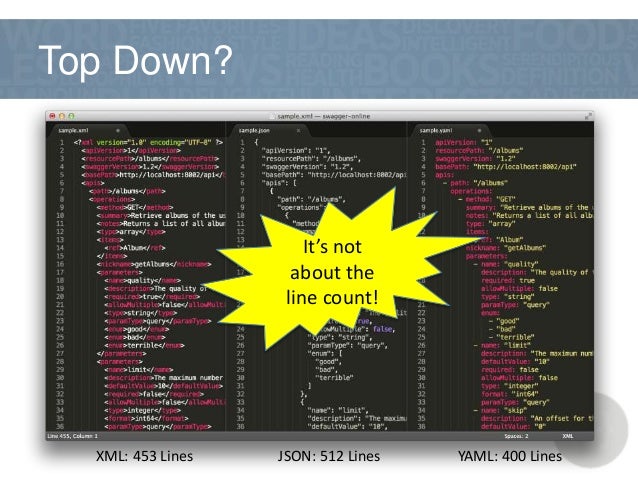

In your case, you returns a list of WidgetDtos, the layer of metadata is a part of the representation of your resource. The OpenAPI Specification (OAS) defines a standard, language-agnostic interface to HTTP APIs which allows both humans and computers to discover and understand the capabilities of the service without access to source code, documentation, or through network traffic inspection. SwaggerHub provides various rules to check the operations, parameters and model definitions for compliance. I think my choice is correct because I separate the resource of its representations (per page 7 'Manipulation of Resources Through Representations' of this RESTful best practices document)
#Swagger apioperation how to#
To solve this problem, I created an extern document to explain these two wrappers and for each of them, how a single resource and a list of resources are represented with metadata. Hide an End-points from Swagger Documentation in Spring Boot REST API In this article, we will learn how to hide any end-points or entire controller for swagger documentation. I noticed an issue where the example value/model could not be shown for response. In my case, responses types are ' application/hal+json' and 'application/json', each of them use a different wrapper with different metadatas. I was generating Swagger API specification from Spring Boot REST controllers using Springfox. Key Difference Simply put, ApiParam and ApiModelProperty annotations add different metadata to Swagger. Furthermore, we will compare these annotations and identify the correct usage for each. This annotation is used to describe the expected responses for the. Overview In this tutorial, we will briefly look at Swagger's ApiParam and ApiModelProperty annotations.

Simply put, ApiParam and ApiModelProperty annotations add different metadata to Swagger. An operation is considered a unique combination of a path and a HTTP method. Furthermore, we will compare these annotations and identify the correct usage for each.

Your metadata is not a part of your resource but it's a part of your resource's representation. This annotation is used to describe the exposed REST API. The ApiOperation is used to declare a single operation within an API resource.


 0 kommentar(er)
0 kommentar(er)
